SH2-129 and Ou4 from Bortle8 skies with OSC
In the vast, star-sprinkled night sky, there are celestial sights that capture the imagination of astronomers and astrophotographers alike. One such object is SH2-129, more whimsically known as the “Squid Nebula.” Nestled within the constellation of Cepheus (ou4), this faint emission nebula offers a visual feast for those patient enough to tease out its details. From my backyard in Austin, Texas, armed with an OSC (One Shot Color) camera, and a quad-pass filter, I embarked on the ambitious task of capturing the elusive beauty of the Squid.
The challenge of imaging SH2-129 with an OSC camera, such as the 2600MC Pro, is not for the faint-hearted. This nebula’s delicate, filament-like structures emit primarily in the H-alpha and OIII light spectrums, which are notoriously difficult to capture with OSC cameras that typically gather less signal in these specific wavelengths. Adding to the complexity, I employed a Triad Quad filter, designed to allow multiple narrowband wavelengths to pass through simultaneously compared to switching to three different narrowband filters of a mono camera set up, it affords the ability to capture faint details, but not the “Tricks” of the trade to really expose the super faint nebulosity in post processing.
Why then, choose such a demanding target and technique? The answer lies in the unique allure of SH2-129. Despite the technical hurdles, the potential to reveal the nebula’s intricate details and contribute valuable data to the astrophotography community drives the passion behind each long exposure. Join me as I share the journey, challenges, and surprising rewards of capturing one of the sky’s most enigmatic denizens.
Description
Sh2-129 aka the “flying squid” is a supernovae remnant composed of diffuse OIII gases within the larger “flying bat” nebula that is primarily diffuse red Ha gases. The appropriately named giant or flying squid was not found until 2011 so it’s a recent discovery that many astronomers and photographers are trying to image themselves!
Acquisition
- Scope: Esprit 120
- Reducer: Apex .65x Reducer – 545 FL
- Filter: Triad Pro Quad Filter
- Camera: 2600MC Pro -5c
- Acquisition: Dither every sub. Autofocus every 10 subs. Autofocus after meridian flip
- Integration requirements: CFA Bayer Drizzle
Total integration time as of 9/19/20202 – 256 5-minute frames.
Day 1:
Do I see anything? Is it worth continuing? Moon is still > 50% but time is running out. I took this challenge late in the season and it blows my mind how quick this object is going down the horizon each morning.
But… I see it!!!
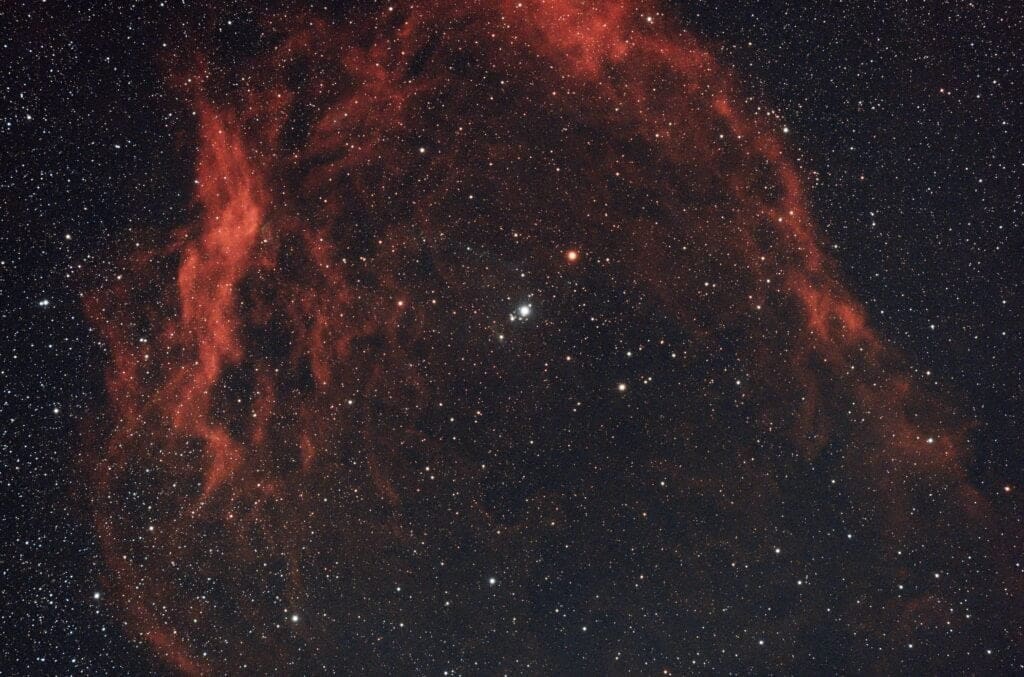
It’s super faint, but it’s there! You can “nuke” it in PI to really see the squid in comparison to background. It’s not too late and it’s not a complete waste of time!
Day 2:
Seventy-five more subs at three hundred seconds each. Little less moon, but dust and extremely high humidity and some wind. I integrated this day to see if I see squid still – yup!
Day 3:
Really bad weather only got about twenty usable subs – I may re-process the master without this day or see if LN can make them better.
Day 4:
Got 70 subs – slightly better weather. Moon less impactful. I used 4 days of calibrated frames to make a “four-day integration” – the fuzz of the squid is starting to build contrast and shape!
Day 5:
Best data yet – best seeing. Transparency improved and no moon. Maybe I can use the best sub from here for LN?
Experimenting with stretch
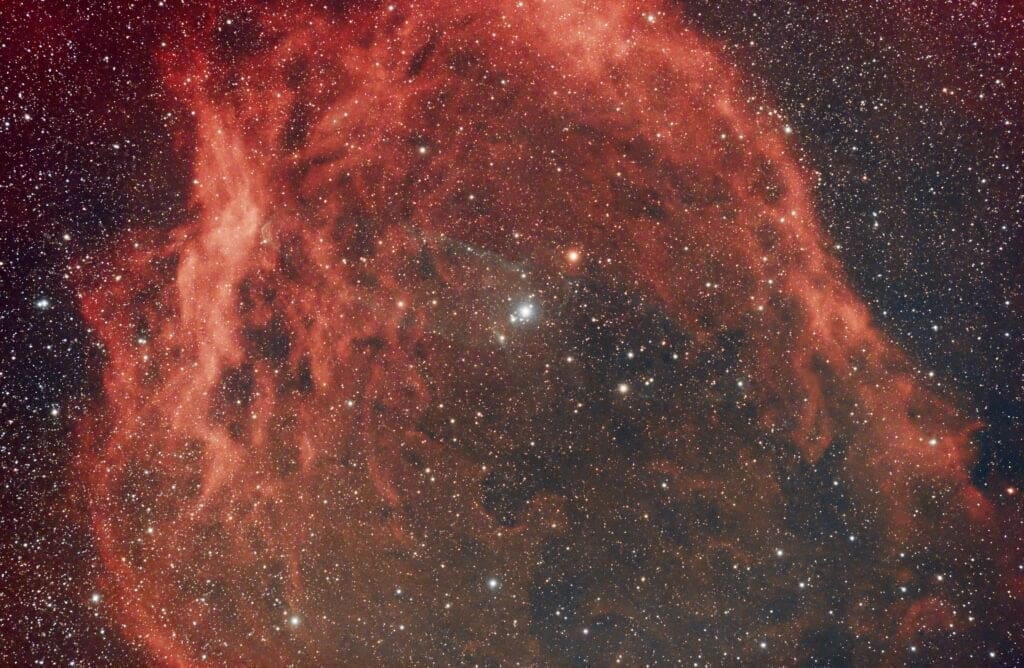
Work in progress
I am not done with processing this. Here is where some light processing after a few days of data has left me. I’m still learning PixInsight and some of the tools to work with what I can. Mostly happy with what I did get considering it is a Bortle 8 sky.
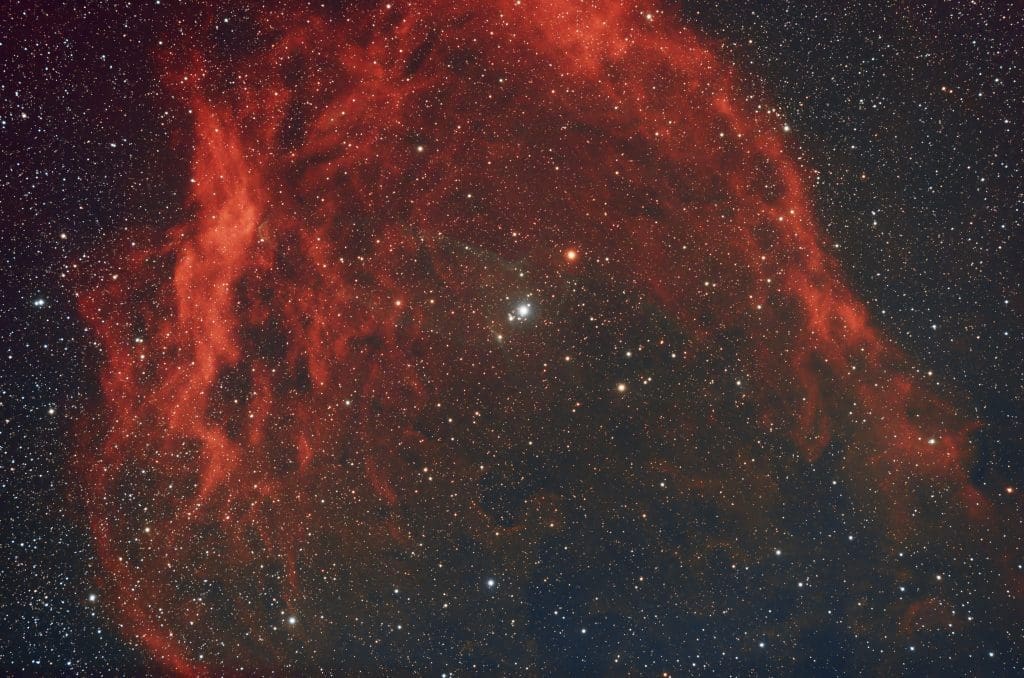
Download SH2-129 Calibrated Stack
Here is a complete stack of SH2-129 for you to experiment with. This data is released under the Creative Commons Attribution license. Feel free to share with friends and family, you just need to link back to this article/source as the official source. That means you can use this data to create your own derivative works if you just link back and credit us.

This work is licensed under a Creative Commons Attribution 4.0 International License.
The XISF and FITS have already been stacked and calibrated with flats.
PixInsight Processing Tips.
Use Dynamic Background Extraction – be sparse and select just areas outside of the main bat nebula and certainly not anywhere near the center where the squid may be.
Be careful with Background Neutralization. The squid has similar OIII bands as a very diffuse cloud in the bottom. Neutralizing this diffuse cloud can neutralize the squid,
Experiment with extracting RGB into separate channels. The Bat is in R primarily while the squid is in G and B channels. You can process those individually and experiment around.
Please share your processing!
I’m opening this data in the hopes we can share our experiences, tools, and techniques to make use of One-Shot Color (OSC) Narrowband data. A lot of people shoot with Mono Filters, and they swear by them – I don’t doubt the capability of that configuration. I’m just excited to be able to help Color imagers get something similar from their setup too.
If you find this one incredibly difficult to process, don’t fret! You can check out our M31 / Andromeda Galaxy data to learn from too!
If you use our data, create your own image, or post your derivative works on Astrobin or Telescopius or any image sharing site, please let back to us and leave a comment below – we love seeing what readers do with this data!

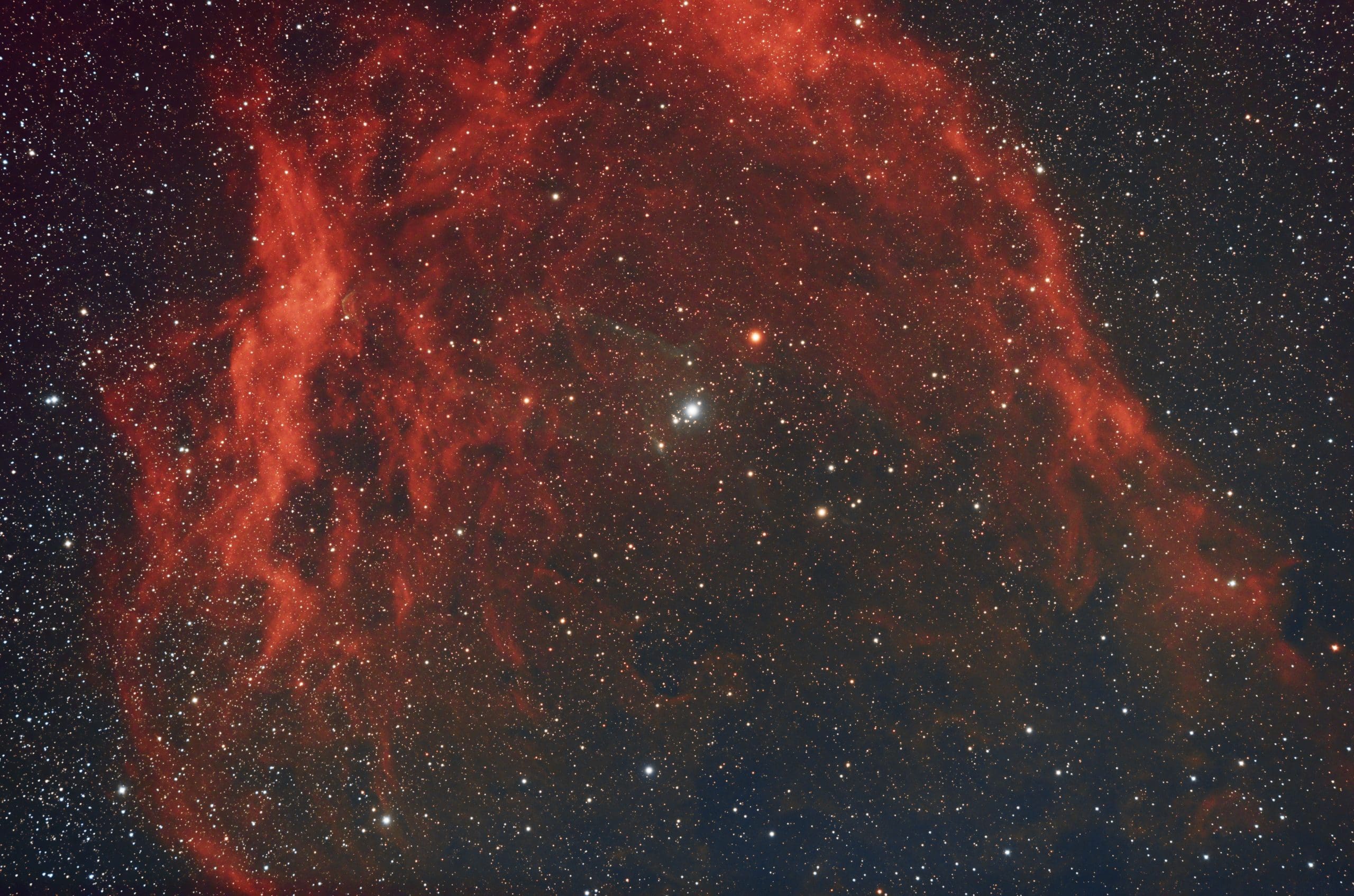
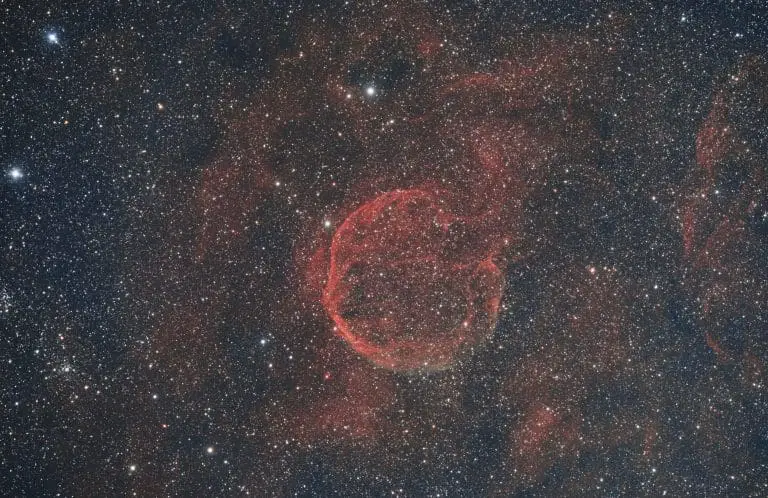
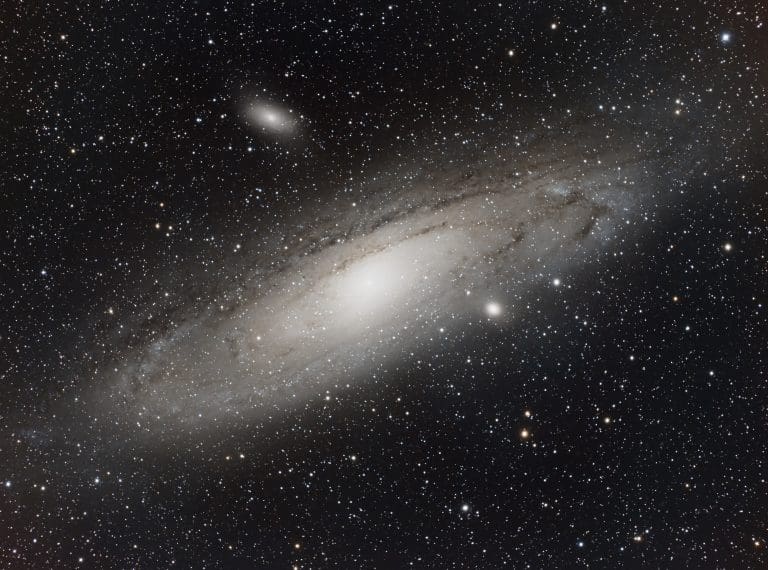
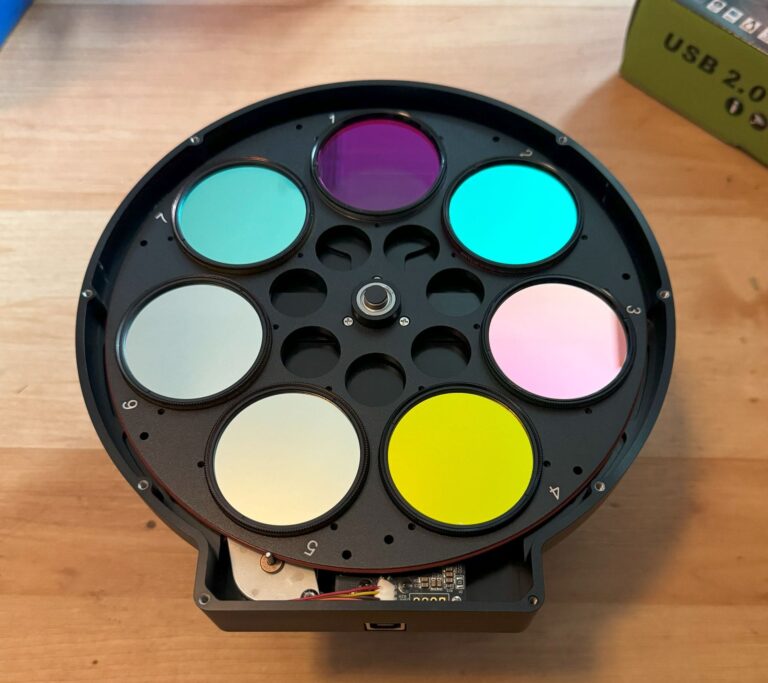

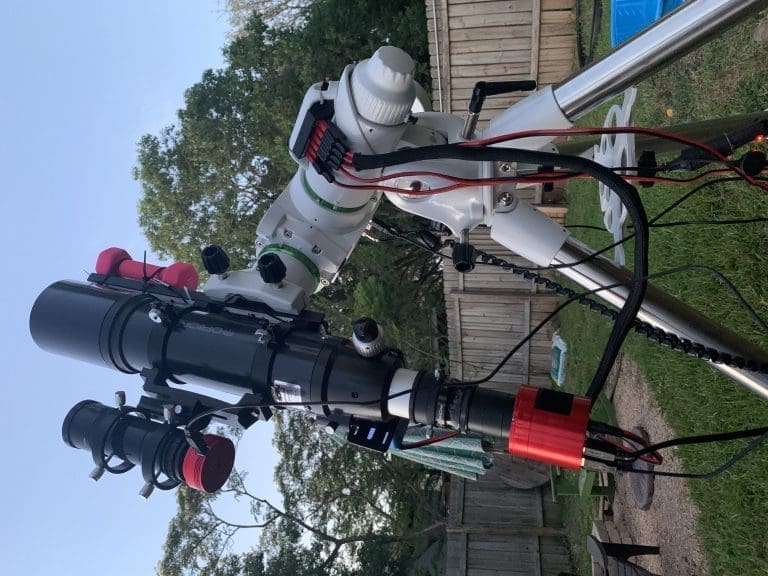
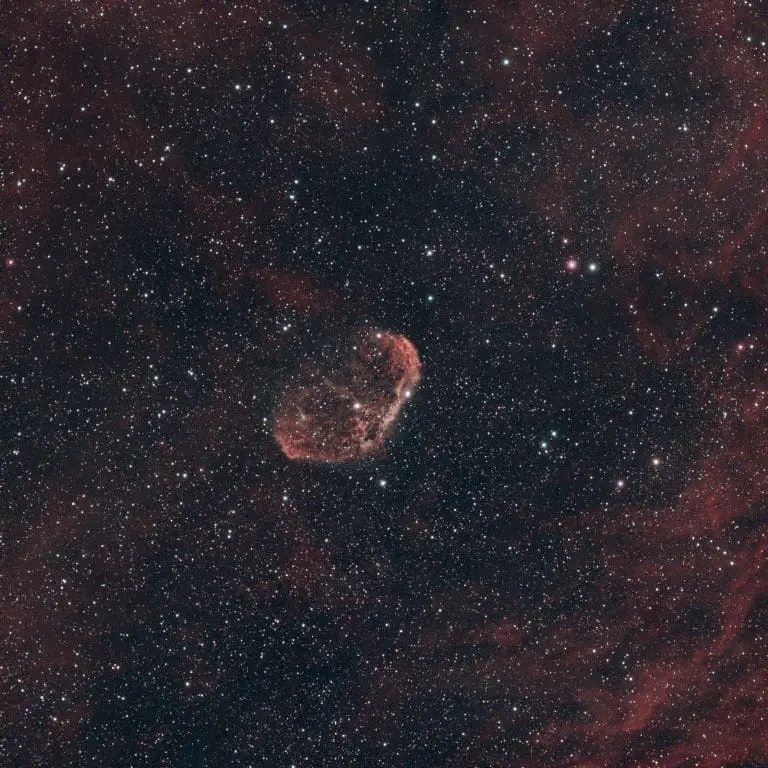
Thank you very much Byron for sharing your files 👍
Here you can see my processing : https://telescopius.com/pictures/view/76171/deep_sky/Sh/2-129/diffuse-nebula/by-jeada